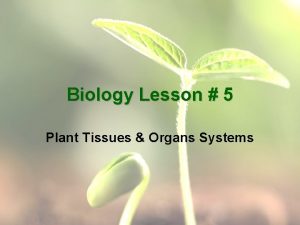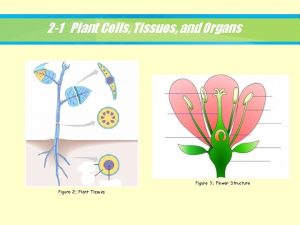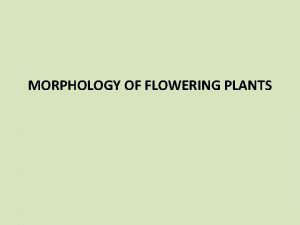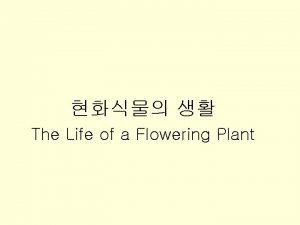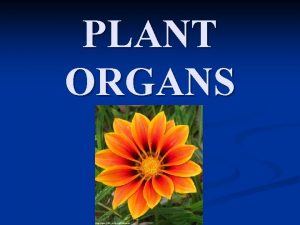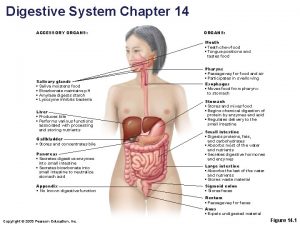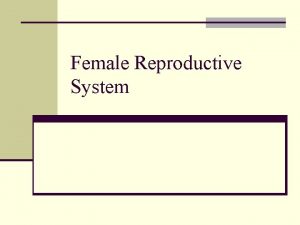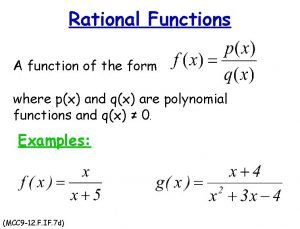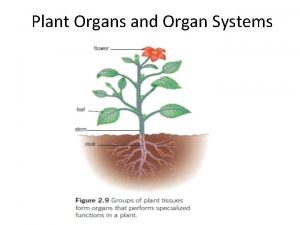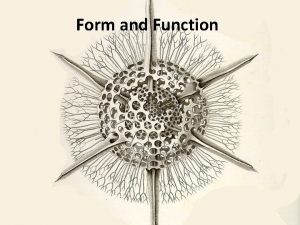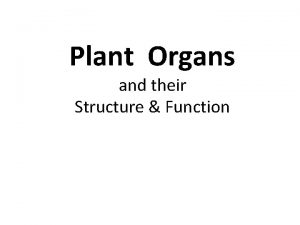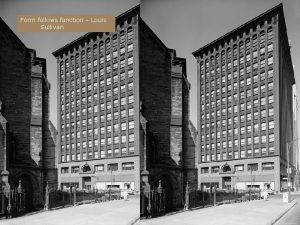Plant Form and Function Plant organs Plant organs












- Slides: 12

Plant Form and Function Plant organs

Plant organs • Root system – roots • Shoot system – stem and leaves • Vegetative organs – (allow to live and grow): roots, leaves, stem • Reproduction: flowers, seeds and fruits

Roots • Underground, usually equal to shoot system in size • Anchors and gives support • Absorbs water and minerals • Penetrates soil as it grows • Root hairs increase surface area • Produce hormones

Root organization • Root cap – apical meristem, replaced often • Zones • Cell division – primary meristem, mitosis • Elongation – cells lengthen and specialize • Maturation – root hairs, fully differentiated

Stems • Main axis of plant • Support leaves so that leaves are exposed to as much light as possible • Node – where leaf is attached • Internode – space between nodes • Vascular tissue used in transport • Can store nutrients and water and conduct photosynthesis

Leaves • • • Photosynthesis Size, shape and texture vary and is used in identification Blade – wide portion of leaf Petiole – stalk, attaches blade to stem Axillary bud – where branch or flower may originate

Leaf anatomy

Plant tissues • Meristematic tissue = embryonic • Apical meristem – located on tip of stem and roots, primary growth • Lateral meristems – secondary growth • Woody (non herbaceous), non woody (herbaceous – perennial, dies back in winter)

Woody Stems • Primary (length) and secondary (girth of trunks) tissues • Secondary tissues form from lateral meristem: • vascular cambium – produces secondary xylem (wood) • Vascular cambium produces new xylem and phloem each year • cork cambium – produces a tough covering that replaces epidermis early in secondary growth • 3 distinct areas: • Bark – all tissues outside the vascular cambium, living part of tree • Contains phloem, can kill a tree if damaged • Wood – xylem, almost all is dead when it functions • Cork

Secondary growth of trees

Vascular tissue • Xylem – water and minerals, roots to leaves • Phloem – sucrose and organic molecules (hormones) form leaves to roots • Complex tissues – contain 2 or more kinds of cells • Both extend from roots to leaves • Roots- located in vascular cylinder, stem – vascular bundles, leave – leaf veins

Vascular tissue
 Stone cells in plants
Stone cells in plants Plant tissue and organs
Plant tissue and organs Colonchyma
Colonchyma Major plant organs
Major plant organs Protect bougainvillea from grazing animals
Protect bougainvillea from grazing animals Plant organs
Plant organs Four organs of a plant
Four organs of a plant Accessory organ of the digestive system
Accessory organ of the digestive system Main function of major organs
Main function of major organs Function of reproductive organs
Function of reproductive organs Function of reproductive organs
Function of reproductive organs What are rational functions
What are rational functions 4-2 standard form of a quadratic function answer key
4-2 standard form of a quadratic function answer key

